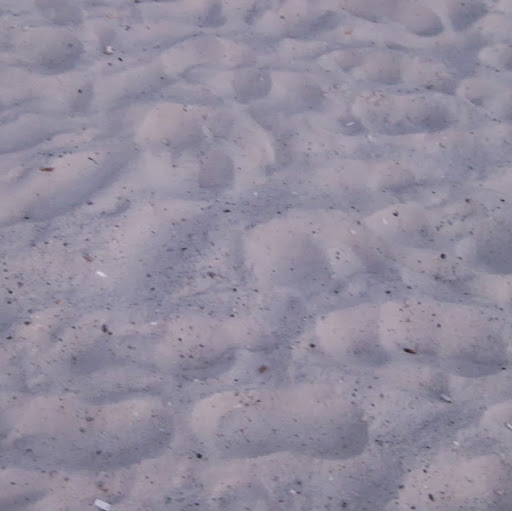Jun Sheng Mo
from Leesburg, VA
- Also known as:
-
- Jun Sheng
- Junsheng Mo
Jun Mo Phones & Addresses
- Leesburg, VA
- Herndon, VA
- 415 S Mary Ave #21, Sunnyvale, CA 94086
- 4155 Mary Ave #21, Sunnyvale, CA 94087
- 710 Monterey Blvd, San Francisco, CA 94127 • 408 732-7256
- 860 Jamestown Ave, San Francisco, CA 94124 • 408 732-7256
- 1737 Redwood Ave, Redwood City, CA 94061
- Hayward, CA
Us Patents
-
Navigation Signal Receiver Trajectory Determination
view source -
US Patent:7439907, Oct 21, 2008
-
Filed:Nov 20, 2006
-
Appl. No.:11/561758
-
Inventors:Chi-Shin Wang - Half Moon Bay CA, US
David Wang - Belmont CA, US
Wentao Zhang - Mountain View CA, US
Jun Mo - San Jose CA, US
Lei Dong - Cupertino CA, US -
Assignee:SIRF Technology Holdihgs, Inc. - San Jose CA
-
International Classification:G01S 3/14
-
US Classification:34235702, 34235713
-
Abstract:The present invention provides methods and systems that enable a mobile navigation receiver to accurately determine its trajectory with non-current ephemeris in stand-alone mode. In an embodiment, the receiver computes the position for the same location using non-current ephemeris and current ephemeris at different time instances. The receiver then determines a position correction by finding the difference between these two computed positions, and applies this correction to the trajectory generated with non-current ephemeris to obtain a more accurate trajectory. In another embodiment, the receiver computes an initial position of the receiver using non-current ephemeris and finds the difference between the computed initial position and an accurate approximation of the initial position. The receiver then shifts the subsequent receiver trajectory computed using non-current ephemeris by the difference to obtain a more accurate trajectory.
-
Method And Apparatus For Self-Calibration And Adaptive Temperature Compensation In Gps Receivers
view source -
US Patent:7459984, Dec 2, 2008
-
Filed:May 26, 2005
-
Appl. No.:11/140492
-
Inventors:Chi-Shin Wang - Half Moon Bay CA, US
Jun Mo - San Jose CA, US
Shaowei Han - Palo Alto CA, US
Hansheng Wang - San Jose CA, US -
Assignee:Sirf Technology Holdings, Inc. - San Jose CA
-
International Classification:H03L 1/00
G01S 1/00 -
US Classification:331176, 331158, 331 66, 34235706, 342352, 34235713
-
Abstract:The invention provides a method and apparatus to optimally estimate and adaptively compensate the temperature-induced frequency drift of a crystal oscillator in a navigational signal receiver. A Read-Write memory encodes two tables, one for looking up frequency drift values versus temperature readings and another one for valid data confirmation on the first table. The initially empty look-up table is gradually populated with frequency drift values while the receiver computes the frequency drift along with its position. During initial start of the receiver or re-acquisition of satellite signals, the stored frequency drift value corresponding to the current temperature is used. If no valid frequency drift value is available, the frequency drift value is computed based on the existing frequency drift values in the table. This invention reduces the Time-To-First-Fix (TTFF) of the receiver and enables the receiver to self-calibrate, thus no additional factory calibration would be necessary.
-
Position And Time Determination Under Weak Signal Conditions
view source -
US Patent:7567208, Jul 28, 2009
-
Filed:Jun 29, 2007
-
Appl. No.:11/771845
-
Inventors:Jun Mo - San Jose CA, US
Shaowei Han - Palo Alto CA, US -
Assignee:SiRF Technology Holdings, Inc. - San Jose CA
-
International Classification:G01S 1/00
-
US Classification:34235712, 34235715
-
Abstract:Described herein are systems and methods that are capable of determining receiver position and system time under weak signal conditions. When the receiver is unable to accurately determine the satellite signal travel time, e. g. , due to weak signal reception or some other condition, the receiver can still estimate the pseudo-range for the satellite based on an initial receiver position and system time. In this case, the system and methods described herein provide the necessary initial receiver position and system time with enough accuracy to estimate the pseudo-range, even under weak signal conditions. The receiver can then use the estimated pseudo-range to determine a more accurate receiver position.
-
Unassisted Indoor Gps Receiver
view source -
US Patent:7570208, Aug 4, 2009
-
Filed:Dec 29, 2005
-
Appl. No.:11/324144
-
Inventors:Chi-Shin Wang - Half Moon Bay CA, US
Zongde Qiu - Shishi, CN
Shridhara A. Kudrethaya - Cupertino CA, US
Jun Mo - San Jose CA, US -
Assignee:SiRF Technology, Inc. - San Jose CA
-
International Classification:G01S 5/14
H04B 1/16 -
US Classification:34235715, 4553432
-
Abstract:The present invention provides GPS receivers capable of tracking very weak GPS signals particularly in an indoor environment without assistance from an external server or a network. In a preferred embodiment, a GPS receiver initially acquires and locks onto GPS satellite signals to compute receiver position outdoors. The GPS receiver then tracks at least one satellite signal indoors to maintain acquisition parameters for quick acquisition of GPS signals. To save power, the receiver automatically goes to the sleep state and periodically wakes up, i. e. , powers up, to maintain the at least one satellite signal tracking. During the wakeup state, the receiver collects ephemeris data from the at least one satellite signal when the ephemeris data needs to be updated for quick acquisition of GPS signals.
-
Narrow Correlator Technique For Multipath Mitigation
view source -
US Patent:8000378, Aug 16, 2011
-
Filed:Dec 22, 2006
-
Appl. No.:11/615704
-
Inventors:Jun Mo - San Jose CA, US
Shaowei Han - Palo Alto CA, US -
Assignee:SiRF Technology Holdings, Inc. - San Jose CA
-
International Classification:H04B 1/00
H04L 27/06 -
US Classification:375148, 375150, 375343
-
Abstract:The present invention provides systems and methods for implementing narrowly spaced correlators to mitigate multipath error, and systems and methods for adaptively changing the correlator spacing for varying multipath conditions. In an embodiment, two sets of correlators with the same code frequency but different code phases are used to implement an adjustable correlator spacing. The correlator spacing is determined by the code phase difference between the two sets of correlators, which can be adjusted, e. g. , by adjusting the code phase values of Numerically Controlled Oscillators (NCOs). An advantage of embodiments of the present invention is that they can achieve much narrower correlator spacings than conventional techniques, e. g. , by making the code phase difference between the two sets of correlators very small. Further, the correlator spacing can be adjusted for varying multipath conditions, whereas the correlator spacing in conventional techniques is fixed.
-
System And Method For Fast Initialization Of Navigational Satellite Signal Receivers
view source -
US Patent:20060250304, Nov 9, 2006
-
Filed:May 6, 2005
-
Appl. No.:11/124413
-
Inventors:Jun Mo - San Jose CA, US
Hansheng Wang - San Jose CA, US
Chi-Shin Wang - Half Moon Bay CA, US
Shaowei Han - Palo Alto CA, US -
International Classification:G01S 5/14
-
US Classification:342357150
-
Abstract:The present invention provides a method and apparatus for a satellite navigation receiver to lock onto satellite signals in the cold start mode with no information on the receiver position, the satellite position, or time estimates stored in the receiver's memory. All satellites in a positioning system are divided into groups based on the satellite constellation structure. In an embodiment, the positioning system is the Global Positioning System (GPS) and all GPS satellites are divided into three groups. During initialization of the receiver, the satellites are searched per group to lock onto at least one satellite signal. Other satellites are then searched in a given order based on their respective distance or proximity to the first satellite acquired. This method reduces the Time-to-First-Fix (TTFF) ordinarily required by conventional receivers in the cold start mode.
Resumes

Jun Mo
view source
Jun Mo
view sourceFlickr

Jun Mo Yang
view source
Jun Mo
view source
Jun Mo
view source
Gu Jun Mo
view source
Jun Mo Park
view source
Jun Mo
view source
Mo Jun
view source
Jun Ho Mo
view sourceMyspace
Youtube
Googleplus

Jun Mo

Jun Mo

Jun Mo

Jun Mo

Jun Mo

Jun Mo
Get Report for Jun Sheng Mo from Leesburg, VA














